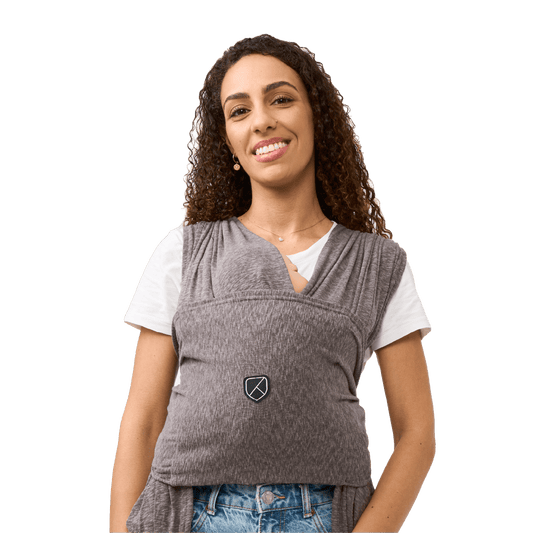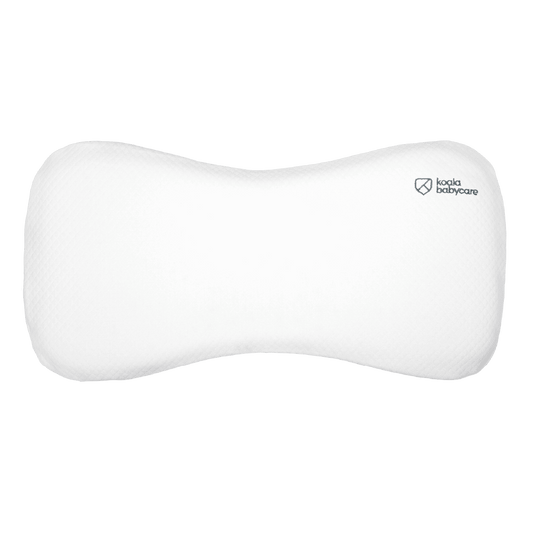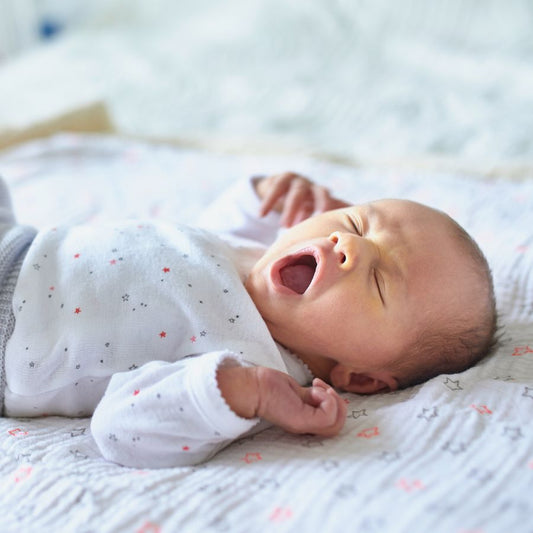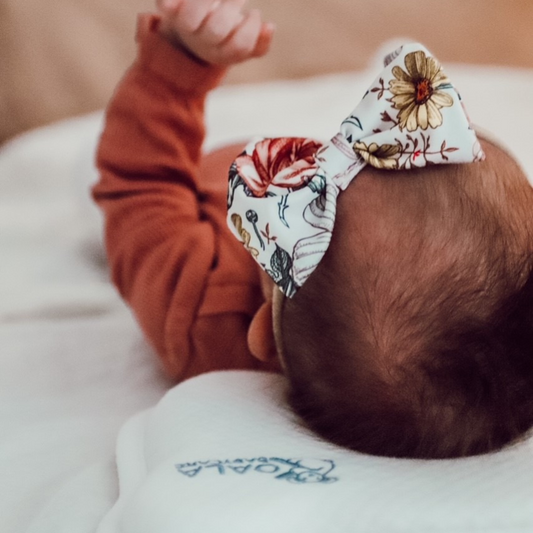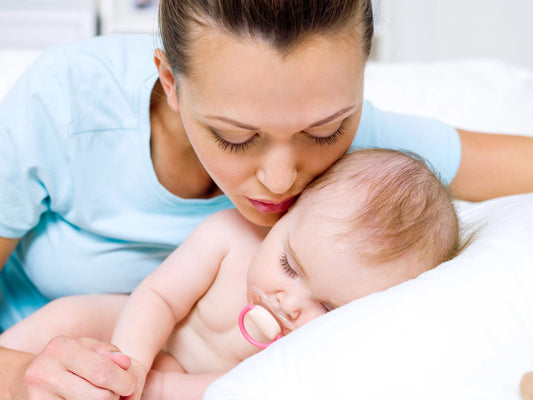The need for close contact
Contact for a newborn baby is a basic primal need, just like eating or sleeping. This is very important to bear in mind and is often overlooked. Biologically speaking, the human species is not designed for the young to be separated from their primary caregivers, as may be the case in certain other species, for example cats or dogs, which leave their offspring in the "nest" while they venture off in search for food.
Human infants reach their full level of motor maturity months after the birth, and until that occurs they are unable to physically follow their parents, as horses do, for example, who stand up and trot behind their mother just a few moments following the birth.
A newborn baby, or rather their primal instinct, is fully aware that in order to survive they must stay close to their mother, and they use contact to ensure they receive the proximity they need.
This contact also serves as a form of practice for the baby as well as being a primary source of stimulation; something which is vital for newborns and babies and has nothing to do with being spoilt, as it is often described.
An infant who only cries when they are in their crib and then stops crying as soon as they are picked up is NOT a spoilt baby, but just a baby expressing a basic human need; a perfect primitive baby trying to survive predators. However, we mustn’t forget the adult in all of this, because motherhood, parenting is a partnership.
Adults need to find a balance between caring for their newborn child as well as their own basic needs, which may vary according to the type of society they live in: looking after other children, working, ensuring water or food is available, but also simply taking care of themselves.
The practice of carrying a baby in a carrier wrap dates back centuries, however, this does not mean that it doesn’t fit into our modern, western lifestyle today. A way of meeting the needs of the young and the grown-ups alike with love.
What is babywearing
The term Babywearing, literally means wearing your baby, and refers to the action or practice of carrying a baby close against one's body, skin-to-skin, in a suitable support (carriers, wraps, slings etc.).
The idea of carrying your baby in a baby carrier is not just a passing trend launched by fashion bloggers. In reality, it’s an age-old tradition used worldwide. Since ancient times, women in Africa, Asia, India, and America have carried their babies in this way, albeit out of pure necessity; having to look after them whilst going about their daily tasks essential for survival.
Babywearing recreates an intra-uterine environment similar to what the infant was accustomed to during pregnancy. The closeness and snugness mimic the mum’s womb; her warmth, her smell, and familiar sounds (her breathing, heartbeat ...), helping support the baby’s transition from womb to world and providing a sense of containment, protection, and security.
This craving for contact is an instinctive and primitive need, fulfilment of this innate desire is vital for newborn babies.
Benefits
A baby carrier offers many benefits for both baby and mother.
Psychological benefits:
- It allows mums to fulfil their deep need for contact and closeness with their baby in the best possible way.
- It helps mums develop empathy towards their baby.
- It reduces crying in babies, both frequency and duration.
- Helps prevent post-partum depression: being close to the baby stimulates the production of anti-depressant hormones (oxytocin) that also support breastfeeding.
- It offers mums constant “cuddle time”, allowing babies to receive irreplaceable warmth and love from their mums, two essential key factors in the emotional foundation of newborn babies.
- It strengthens mother-baby bond.
Physical and practical benefits of babywearing:
- Allows for even distribution of weight, alleviating strain on the back, shoulders, and upper and lower limbs (especially your knees).
- Provides “hands-free” parenting, even when carrying your infant close by.
- Allows mums to go outside easily without struggling with prams or pushchairs.
- Provides mums with opportunities for physical exercise.
- Improves the baby's neuro-motor development.
- Helps babies develops a sense of balance, important for maintaining a position snuggled closely to their mum's body.
- Promotes correct hip development.
- Eases abdominal discomfort from gastroesophageal reflux and colic.
- Limits the amount of exhaust fumes from cars the baby breathes in due to their higher position.
- Improves sleep.
- Encourages feeding in newborns and attachment to the breast.
- Reduces the risk of Flat Head Syndrome (plagiocephaly) caused by prolonged periods of lying flat when sleeping and napping.
- It regulates baby’s body temperature.
- Favours baby’s interaction with their surrounding environment and subsequently aids their development.
- Improves the effectiveness of therapy in premature or disabled babies.
Babywearing holds many benefits from a psycho-physical point of view for both mum and baby, however, it also provides dads with the opportunity to connect and bond with their baby, offering many other positive effects.
Useful tips
Baby carriers, wraps and slings, can be used right from birth. You can babywear for as long as you want – there’s no set age limit. However, children should walk on their own as soon as possible. When they reach three years old, they shouldn’t be using any form of carrying aid anymore, including prams and pushchairs.
It’s fundamental you choose an ergonomic carrier, i.e., one that respects the delicate natural body shape of infants and babies, as well as whoever is wearing it, therefore, ensuring that babywearing is comfortable and safe for both.
There are different types of baby carriers available, depending on the baby’s age and their motor development stage:
- Stretchy wraps: this is the first type of baby carrier that is recommended to use for newborns from birth, it holds infants up to around 6-8 kg in weight, and allows the baby to be carried in the tummy-to-tummy position (the only position advised during infants’ first few weeks of life)
- Woven wraps: when the baby's head is relatively well supported (generally around 3-4 months) you can change to a woven wrap, which can be tied in a variety of ways; initially, the baby can only be positioned facing the parent (tummy-to-tummy, or rather: heart-to-heart), then, as the baby grows, you can move to side carrying and finally, on to back positioning.
- Ring Slings: these are sling carriers with a ring and are very quick to put on, suitable for very short outings.
- Mei tais: These are basically a cross between a wrap and a soft-structured baby carrier; they offer very close contact between the infant and the baby wearer, just like with a wrap, but with the added bonus of being ready to use.
- Soft structured carriers: there are numerous types available depending on the weight and age of the infant; they consist of a panel of fabric with straps and usually fasten with buckles around the waist and at the back.
Safety
However fantastic they may be, all types of baby carriers must be used with common sense:
- Never use a baby carrier in the cradle position.
- Never carry your baby facing out in a carrier.
- Never use a baby carrier while engaging in potentially dangerous activities (such as cooking).
- Never use a baby carrier in the car or on any other means of transport (bikes, motorbikes, horses, trains, buses – exception being on planes).
- Never immerse in water with a baby inside the carrier.
- Always check the product for defects prior to use, if any part is damaged, do not use.
- Until you feel confident, practise putting you carrier on and tying it near a bed, a sofa or with dad’s help, if possible under the guidance of a baby carrier specialist.
- Always make sure that the baby's airways (nose and mouth) are clear and not pressed against your body or covered by fabric.
Happy babywearing to mums, dads, grandparents and why not, even to caregivers.




